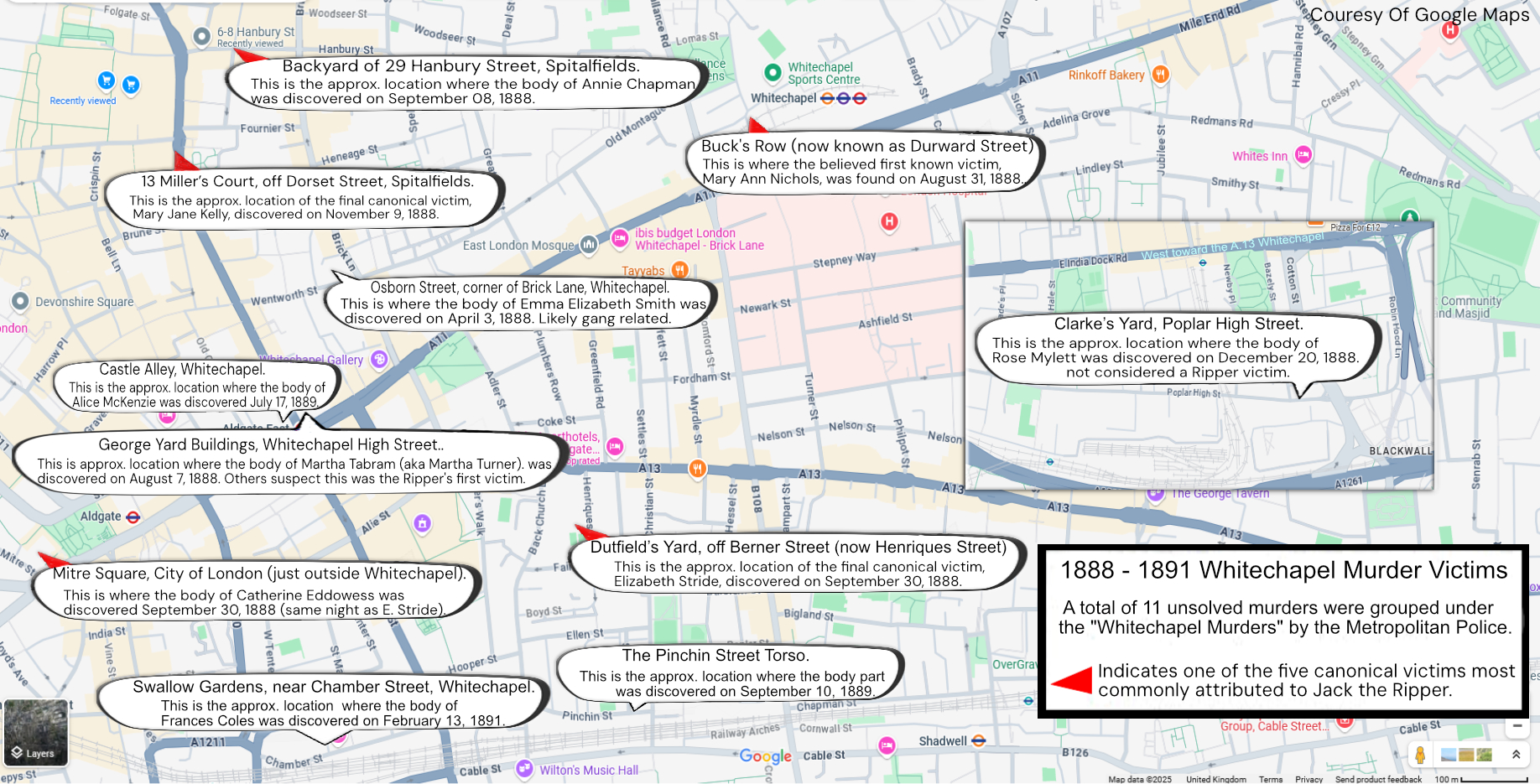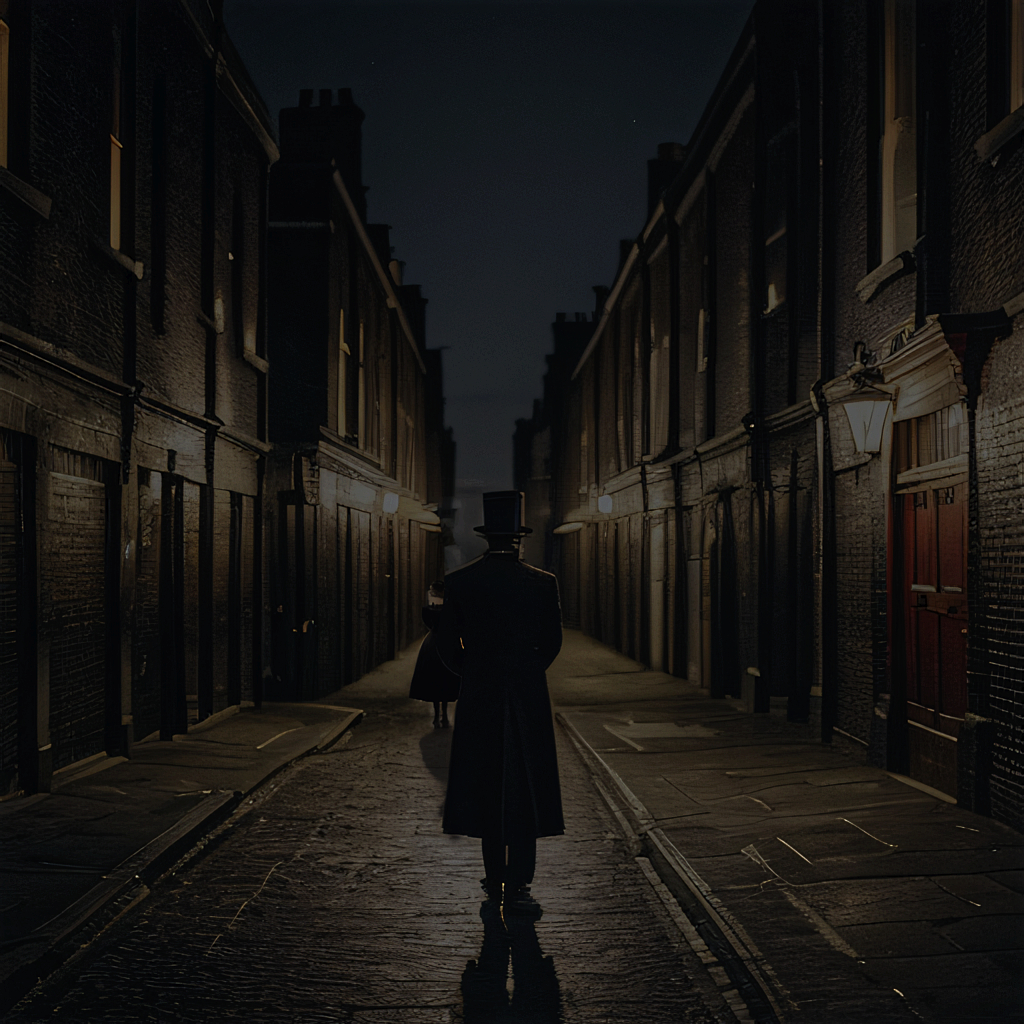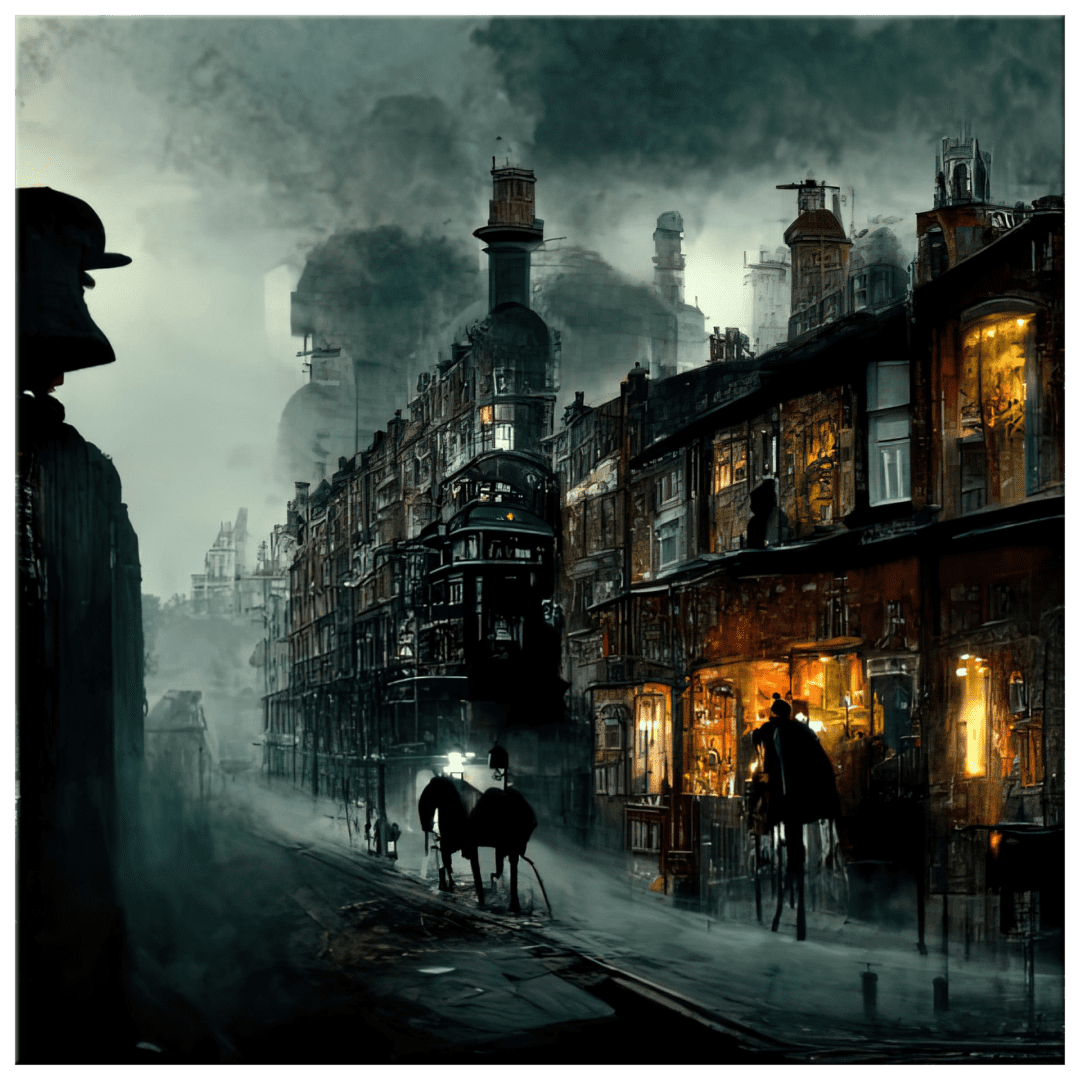After watching a TV program on unsolved murders – “story of the Whitechapel Murders” stuck out like a sore thumb. I began looking for fact-based information on the mysterious individual known as “Jack the Ripper.” How did he manage to remain anonymous despite his brutal crimes?
A police file titled “The Whitechapel Murders” details 11 women who were murdered in the East End of London between April 1888 and February 1891. Interestingly, one of these murders occurred outside the boundaries of Whitechapel itself. However, due to its proximity, investigative overlap, and the widespread fear at the time, it was included in the official file.
The five canonical murders most commonly linked to Jack the Ripper happened between August 31 and November 9, 1888, all within Whitechapel – a district in London’s East End, now part of the Borough of Tower Hamlets.
Over the years, countless theories have emerged about the Ripper’s identity – from surgeons to slaughterhouse workers, aristocrats to fools. But what if the truth was more unexpected? What if, in a society quick to see violence as a man’s domain, the real killer moved unnoticed – hidden behind not just fog and fear, but assumption?

A Cloak of Anonymity
Whoever this individual was preyed upon those most vulnerable in Victorian society – particularly women driven to desperate measures for survival. Many found themselves forced to abandon conventional morality, with prostitution becoming a tragic consequence of extreme poverty, abandonment, or lack of viable opportunities.
These women, often referred to as ‘women of the streets,’ lived on the fringes of polite society, facing immense hardship and danger not through willing choice, but through circumstance.
Was it that these particular women were less likely to be believed or missed if they went missing, providing him with the perfect cover, for his crimes. Although Catherine Eddowes’ tragic death was within London’s own police force jurisdiction, the rippers identity remains unknown despite numerous suspects being investigated over the years.
Thinking Outside The Box
“I realise this is a very niche topic! My scenario’s/story are normally “What If” situations. However, I have known of the story from my teenage years, and I now have a chance to get my head around these horrific murders. With a little twist. What follows is my fictional scenario/creative writing of what I think may have been one of the reasons that drove the killer.”
Fiction Disclaimer:
“This is a fictional account – Just my weird imagination at work. It is born from an unsolved Murders program I have been watching. It is not a historical document nor does it claim to be the real Ripper’s confession” (Shahdaroba 2025).
The Shadow of Whitechapel: A Confession
My name is unimportant – and will remain unknown. I am a faceless figure, lurking in the shadows of Whitechapel, driven by an insatiable hunger and uncontrollable urge that consumes my every thought. They call me “Jack the Ripper,” but that name means nothing to me. It is a label, pinned upon me by those desperate to give shape to something they cannot understand.
A Childhood Forged in Poverty
I was born into poverty, in the grimy streets of London’s East End. My childhood was marred by hardship and neglect, a constant struggle for survival amidst the squalor and filth.
As I grew, so did my resentment toward the world that had spat me out like discarded refuse. I watched the wealthy live in comfort while we clawed for scraps, and something inside me hardened. A quiet rage took root – slow-burning, patient, waiting for the right moment to rise.
Justification Through Symbolism
My victims are not chosen at random. Each one is a symbol – a reflection of the rot that festers beneath society’s polished surface. They are women who have fallen – some by circumstance others by weakness, or choice. In my eyes, they have already surrendered to the filth, and for that, they must be judged. To me, they embody the licentiousness and immorality that pervade society, hidden beneath layers of polite veneer. Their deaths are not crimes. They are warnings. A form of judgment. A cleansing.
The Dark Of The Night

Each murder is meticulously planned, executed with cold precision. I strike quickly and silently, like a serpent striking its prey. My methods are brutal, savage even, but they are not born out of pleasure or sadism. No, my actions are driven by something far more profound: a desire to purge the streets of their impurities.
A Game of Cat and Mouse with the Law
The police hunt me relentlessly, but they will never catch me. I am too clever for them, too cunning, and they look for the wrong person. The fog itself becomes an accomplice – cloaking footsteps, swallowing screams, concealing not just my movements but the careful adjustments made to defy expectation – a constant pressure, a subtle ache that reminds me of the deception required. I leave behind cryptic letters taunting them with information only the killer could know, signed with that ridiculous alias they’ve bestowed upon me. It is my game to play, and I intend to win.
Moments of Doubt & The Return of Rage
Yet, there are moments when doubt creeps in, when I question myself and what I have become. But then I remember why I started down this path, and the rage returns, burning hotter than ever. This is my purpose, my calling. I am the embodiment of Whitechapel’s dark heart, its secret shame.
The Cycle of Purification

I shall continue my work until they catch me or until there is nothing left to purify. The cobblestones will remember me – stained red, never to be clean again. And when it is all over, when the last body falls and the game is done, I shall fade back into the shadows from whence I came, leaving behind only whispers of “Jack The Ripper” and the chilling reminder of humanity’s darker impulses.
A Product of Corruption
“For I am no monster born of evil; I am a product of this corrupt world, forced to adopt its shape to survive within it.” as long as there is sin and decay….the darkness will always find a way. Even when no one is watching.
Conclusion
“While this narrative remains a work of fiction it relies upon fact based Information, it underscores the importance of understanding the social context surrounding the Whitechapel murders. The extreme poverty, lack of opportunity, and systemic exploitation faced by women in Victorian London created a breeding ground for desperation and violence. Though we may never know the precise reasons driving ‘Jack the Ripper,’ acknowledging these underlying factors is crucial to comprehending this tragedy – and preventing similar atrocities from occurring again. It’s a grim reminder that we are all human beings, deserving of dignity and the right to be seen, and that lessons must be learned from the darkest chapters of history to build a more compassionate future” (Shahd 2025).
In post Image by steven underhill from Pixabay